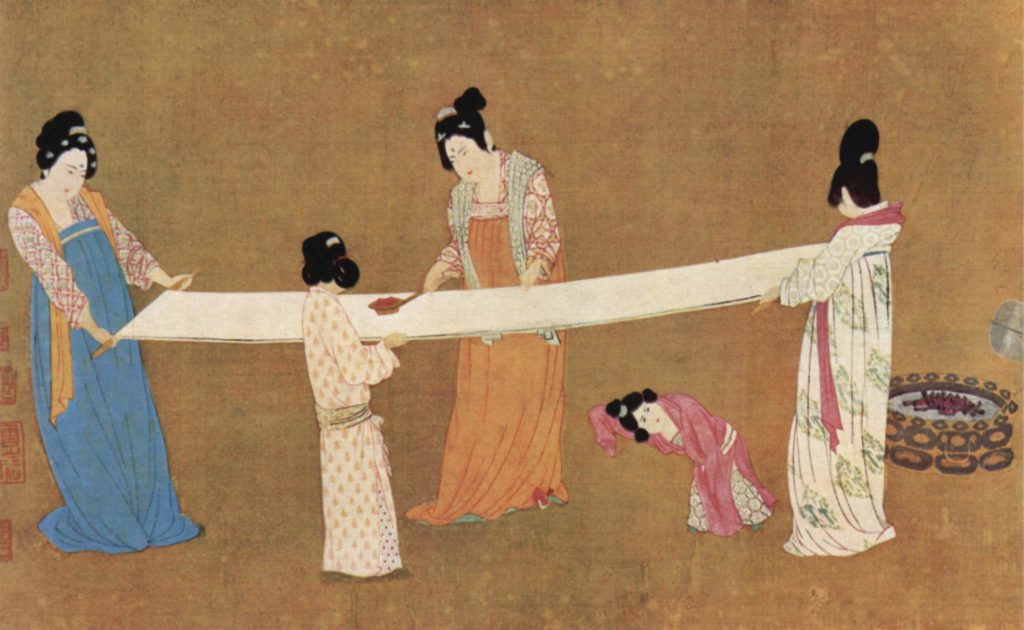We talked so much about Hemp, but we never really got down to its roots, so the time has come to sit down with you for a walk on the timeline of Hemp Evolution in terms of Human Civilization.
Prehistoric Hemp
Cannabis Sativa L., Romanian cânepă, Italian canapa, French chanvre, English hemp, German hanf, is one of the most versatile and precious plants ever discovered by mankind, being used for millennia in various forms and across multiple industries.
"The word "hemp" is also used loosely to refer to almost any long vegetable fiber other than "flax". In particulary, "deccan hemp" also called "guinea hemp" or simply "hemp" is more properly distuinguished as "kenaf" and comes from the plant Hibiscus cannabinus of the mallow family." (Kirby 1963, 102)
The exact geographical origins of this sacred plant remain though unknown. Some sources indicate a form of wild hemp in the steppes of Central Asia, around Lake Baikal, dating from more than 10.000 years ago. Other voices suggest that the plant emerged around the Yellow River in China, while another theory advocates the foothills of the Himalaya mountains as its first home.
De facto, much earlier proofs of possible hemp fibers applications were reported following the discoveries of James Adovasio, an expert in prehistoric fiber technology. Back in 1997, at one of the archeological and paleobotanical sites in Moravia, Czech Republic, the American archaelogist and his team identified imprints of plant fiber cordage on four clay fragments, dating back to Upper Paleolithic time period, Gravettian culture, cca. 26.980 – 24.870 B.C..
These findings suggest that ”the impressions were created from fabrics woven of fibers from wild plants, such as nettle or wild hemp, that were preserved by accident” (Pringle, 1997, citing Adovastio et al. 1996), and are acknowledged nowadays as ”earliest forms of fiber arts known, some 10.000 years earlier than anything found before” (Adovasio et al. 2007)
At the end of the last glacial period, around 11.700 years ago, people started to establish themselves in small agricultural communities, replacing their animal skins garments with fabrics weaved out of natural fibers. In this respect, Australian archaeologist, Ian Gilligan (2016), specialized in the origin of clothing and the role of textiles in human history, indicates that the oldest fragment of a textile was found in Guitarrero Cave, in Peru, dating back to 11.000 years ago. Although archeologists could not identify exactly the nature of the fiber, they suggested and finally agreed unanimously that it was ”sisal hemp” (Jolie et al. 2011).

Oldest fragment of a textile in South-America, sisal-hemp (11.000 years old)
Guitarrero Cave, Peru
(Source: Jolie et al., 2011:290)
This fact shouldn’t surprise anyone. Hemp is widely considered as the world’s first plant cultivated by man for the processing of textile fibers, even before linen (flax), jute, cotton or wool. John Garraty in his book ”The Columbia History of the World” (1972) also suggets that hemp is, probably, the oldest example of human industry, a remnant of hemp cloth being discovered also in ancient Mesopotamia (currently Iran and Iraq), dating back to 10.000 years ago.
More recently, Standford University Professor Ian Hodder (2013), a Fellow of the British Academy, made one of the most spectacular discoveries at the Çatalhöyük site in Turkey – considered today as the world’s oldest town – a piece of fine linen cloth weaved with hemp, used to shroud the body of a baby buried under the floor of the family house, and dating 9.000 years old.

Linen cloth weaved with hemp, (9.000 years old)
Çatalhöyük, Turkey
(Photo: Scott Haddow, Source: I. Hodder, 2013)
Thus, hemp was known and commercialized from early Neolithic times, but its true spreading and systematic cultivation began only during the late Neolithic period, in ancient China. Here, through the ruins of Xi’an Banpo village in Shaanxi province, an amphora impresed with a hemp cord design is well documented.

Amphora with impresed hemp cord design, ca. 4.800 B.C.
Yangshao culture, China
(Source: Guimet Museum, Paris)
Brief Timeline of Hemp Evolution BC
10,000 BC: In Taiwan, the earliest-known hemp relic in existence.
8000 BC: In China, the earliest known cloth fabric is woven from hemp.
5500 BC: Earliest known depiction of hemp in existence from Kyushu Island, Japan
4500 BC: China: Hemp is used for rope and fishnets.
4000 BC: China uses hemp foods.
3500 BC: Hemp rope was used in the construction of the pyramids because its great strength was ideal for working with large blocks of stone.
2800 BC: China makes first rope from hemp fiber.
2800 BC: Lu Shi (500 AD) mentions an Emperor who taught people to use hemp at 2800 BC.
2700 BC: China: Hemp was used for fiber, oil, and as a medicine. Examples of each were purposefully left in tombs with bodies.
1200 BC: Hemp cloth found in tomb of Pharaoh Alchanaten at El amarona. Records of apothecary form the time of Ramses III suggest hemp’s use for an ophthalmic prescription.
1100 BC: City of Carthage uses hemp to dominate Mediterranean Sea as hemp is used in ships, rope, and as medicine.
1000 BC: Hemp is cultivated in India.
650 BC: Hemp is mentioned in cuneiform tablets.
450 BC: Greek historian Herodus claims that “hemp garments are as fine as linen.” From Asia to Afghanistan to Egypt, hemp was widely cultivated for its fiber.
400 BC: Buddha was nourished with hempseed.
300 BC: A Carthaginian galley sank near Sicily was found with hemp onboard that was still identifiable after 2,300 years of salt water exposure.
200 BC: Greek Moschion wrote of hemp ropes used in the flagship Syracusi, and other ships of the fleet of Hiero II.
2nd Century BC: Roman writer Pausanaius noted hemp was grown in Elide.
100 BC: Chinese make paper (oldest surviving piece) from hemp and mulberry.

Leave a comment